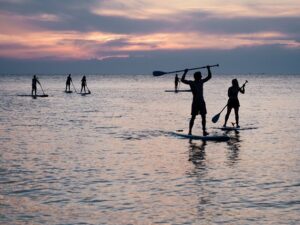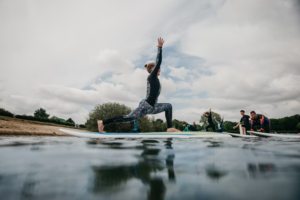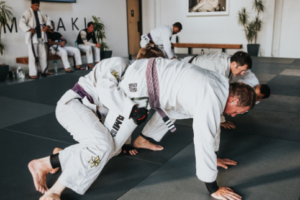
Stand-up paddleboarding is one of the most popular water sports, and for good reason. It’s fun, easy to learn, and can be done by anyone regardless of their skill level. If you’re interested in learning more about this activity before trying it, then read on!
1) The Basics
Stand-up paddleboarding is a relatively new sport that’s quickly gaining popularity all over the world. A lead resource for SUP information, Water Sports Whiz, says that while SUP boarding and similar activities like kayaking are fun, it is important to consider safety first. Take it easy in the beginning. It can be strenuous on your muscles, but it provides an amazing way to get out on the water and exercise at the same time.
One of the coolest things about stand-up paddleboarding is that unlike surfing (which requires waves), anyone can do it regardless of their skill level. It’s very easy to learn because all you need to do is lean to the side to turn. So, whether or not you’ve ever been on the water before, this sport could be perfect for you! Visit the Typhoon Water Park in Texas and more if you love swimming and other water activities.
2) Board Design
SUP boards are manufactured in various shapes. Some of the most common types are Longboards, which are designed to allow beginners to catch waves easily, and shortboard, which are made for more experienced paddlers. Both shapes have their advantages and disadvantages.
Longboards are big and heavy but provide great stability for beginners. They’re also longer than your height which makes them easier to catch waves on since they don’t sink very deep into the water. On the other hand, shortboards are smaller in their size which makes them more able to be maneuvered quickly. Like longboards, they’re designed to help you catch waves with their curved front edge.
Most SUP boards are made with a hard, foam center and fiberglass on the outside. The thickness of the board will determine how it feels when you’re paddling through the water. If you’re just starting out, go for thicker boards since they’ll be more forgiving if you fall off onto them.
3) Where It’s Popular

Stand-up paddleboarding is popular all over the world but you’ll find that people love it for slightly different reasons. For instance, some cities utilize it as an alternative form of transportation while others use it for leisure and fitness activities. Some of the best places to stand up paddle are Hawaii, California, and Florida. So, whether you want to experience a new culture or just get in some amazing shape while having fun, your best bet is to quench your thirst for adventure on the water with stand-up paddleboarding!
You can do stand-up paddle boarding anywhere that’s big enough to fit a water source, but keep in mind that you will need an instructor or guide in order to do it safely. If you jump in without proper guidance, then you might not be able to get back on the board. Always wear your leash cable when out on the water and don’t go beyond your comfort level since there are some risks associated with the activity.
4) Where To Buy
It is becoming more common nowadays for sporting goods stores to carry stand-up paddleboards so if there’s a store near you, then go ahead and give it a shot. However, if that’s not an option then don’t worry! You can easily purchase a board online that will be delivered to your doorstep in no time. In fact, SUP boards make great gifts for anyone who enjoys being active outside on the water! SUP Boards Review posts honest reviews of paddle board gears so make sure to check them out.
5) The Price Range
The price range for stand-up paddleboards is anywhere from $350 to $2000 depending on the quality of the board and its accessories. As a general rule, you’ll get what you pay for so if you’re just getting started, then consider purchasing a lower-priced board until you know whether or not this sport is right for you. Also, if you’re not sure that stand-up paddleboarding will be something you’ll like to do for a long time, then it’s smart to invest in a board that won’t put too much of a dent in your wallet.
6) The Preparation You’ll Need
What you need to know about stand-up paddleboarding is that it is pretty simple and intuitive. After a quick tutorial, even your grandmother will be able to do it. Plus, if this is something new for you, then I recommend taking some classes with an instructor or guide so that you can also familiarize with the proper safety precautions.
7) Safety First
Always wear a life jacket and don’t go out on the water if you’re feeling sick or tired since it can be dangerous. If you fall off of your board, then try to grab onto it (but not before making sure that your leash is attached). You can also sit with your legs in front of you and use your hands to paddle backwards. If you have a force of waves coming from behind you, then paddle on the side of the wave so that it doesn’t hit your board or hit you!
8) What You’ll Need to Get Started
Other than a stand-up paddleboard, there are also some other things you’ll need to get started:
- A spare paddle (it’s a good idea to have 2 paddles).
- A leash cable.
- A life jacket.
It would be a good idea to have two paddles because, if your first one breaks, then you’ll have a spare one. Plus, they’re pretty affordable nowadays.
Stand-up paddleboarding is a relatively new sport that’s quickly gaining popularity. It has become increasingly popular all over the world for different reasons such as an alternative form of transportation or fitness activities while others enjoy SUP boards because they are able to explore new cultures with ease. You’ll also find that stand-up
Paddleboard prices range from $350-$2000 depending on what kind of features come standard with your purchase (if any). It is easy to learn, provides a really fun way to exercise by getting you out on the water, and it can be done by nearly anyone regardless of their skill level, age, or expertise. Try it now.








Such a great guide! Thank you so much for sharing this. SUPing is a very relaxing sport and perfect for all ages! This is extremely helpful, especially nowadays when more and more people are getting into paddle boarding. It is not surprising how it gained heaps of popularity these days . Read about it here :
https://3dfins.com.au/blogs/media-spotlight/the-rising-popularity-of-stand-up-paddleboarding
Thanks for the interesting article. Indeed, kayaking works wonders. Connecting with nature and water is what everyone needs.